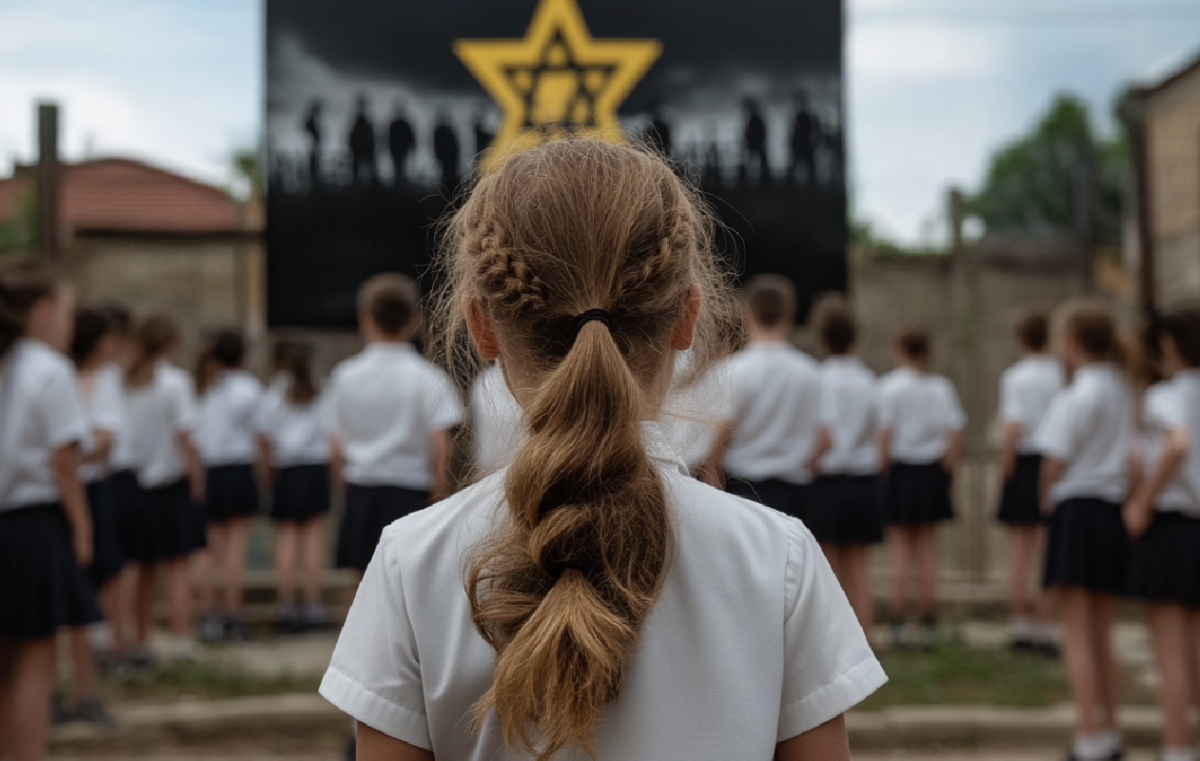Memory in the Shadow of War
Why traditional ceremonies no longer reach today’s youth, and what actually fosters a real, lasting connection to Holocaust memory

Fewer grand ceremonies, more intimate conversations; less identification with the victims, more empathy and understanding.
Prof. Zehavit Gross, a leading expert in Holocaust education, describes the changes that can help children and teens form a deeper, more meaningful connection to Holocaust memory—and explains how to approach the hard questions around this complex topic.
“The greatest mistake in Holocaust education is trying to connect students to the events through past trauma,” says Prof. Gross, Dean of the Faculty of Education at Bar-Ilan University. “We must never ask students to identify with Holocaust victims. Identification requires them to imagine themselves in the victim's shoes—and that’s a pedagogically destructive process.”
In recent years, Holocaust Memorial Day has taken on a different tone, with traditional ceremonies becoming less relevant to younger generations. According to a study by Prof. Gross—who also heads the Sal Van Gelder Holocaust Literature Research Center—many students report feeling “lost in the big ceremonies” and struggling to connect with the content.
To address this disconnect, Prof. Gross recommends a shift toward an empathy-based approach. “The student stays ‘here,’ the victim remains ‘there,’ and what develops between them is a dialogue of reflection—one that encourages compassion while maintaining emotional boundaries. This allows students to engage with the Holocaust without experiencing secondary trauma.”
In contrast, identification-based methods often ask students to imagine themselves in concentration camps, which can lead to emotional distress. The empathy-based approach, however, invites them to hear the stories and understand the feelings of those involved—without pretending to be them.
To support this approach, Prof. Gross developed a unique lesson plan centered around a poem she wrote titled “There and Here.” The lesson, which has been implemented in informal educational settings, invites students to listen to the poem, share their emotions, and explore questions that link past and present—without blurring the lines between them.
“Focus on the Strength and Values That Helped People Survive”
Since the traumatic events of October 7, air raid sirens have triggered fresh memories of missile attacks for many children. “We are in the midst of a national trauma, and the education system must respond accordingly,” says Prof. Gross. She also offers guidance on how to address common questions children ask during Holocaust studies:
“Could this happen again?” – Emphasize the significant difference: today we have a sovereign state, a strong army, and stable institutions. We are no longer helpless. It’s important to listen to children’s fears while reassuring them with the reality of today’s protections.
“How did it happen?” – Avoid graphic horror stories. Instead, highlight the inner strength and moral values that helped people survive—stories of mutual aid, bravery, and resilience.
“Why did this happen to us?” – Use this as a gateway to discuss Jewish identity, the global Jewish community, and the power of shared memory. Such conversations can foster belonging and meaning—especially during uncertain times.
“What should I feel?” – Validate a range of emotional responses and avoid imposing forced identification. The key is to create a safe emotional space, helping students process difficult history in a way that builds personal and collective resilience.
From Ceremonies to Conversations
Recently, Prof. Gross spoke with the head of a student delegation to Poland, who noted with surprise that none of the girls cried during the trip. “The principal was stunned. She speculated that the harsh experiences the students endured during the Iron Swords War reshaped their emotional frameworks and altered their relationship to history and collective trauma.”
In light of this, Prof. Gross advocates replacing large-scale memorial ceremonies with smaller, more intimate gatherings—like the “Zikaron BaSalon” (Living Room Remembrance) initiative. “We need educational encounters in smaller groups that allow for deep discussion and foster connection and meaning. In today’s world of instant gratification, smartphones, and social media, attention spans have shrunk dramatically. That’s why smaller, more intimate settings are much more effective.